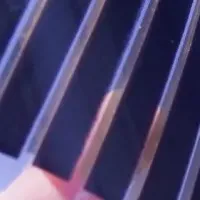
U.S. GoldMining Initiates Critical Testing for Whistler Gold-Copper Project in Alaska
U.S. GoldMining Starts Metallurgical Testing at Whistler Gold-Copper Project
U.S. GoldMining Inc., listed on NASDAQ as USGO, has announced the commencement of metallurgical testwork at its Whistler Gold-Copper Project located in Alaska, approximately 105 miles northwest of Anchorage. This initiative is an important step in the company's plans to conduct an initial economic assessment to evaluate the potential profitability of the Whistler site.
The testwork aims to optimize a process flowsheet that will significantly enhance metal recovery from the project’s gold and copper mineralization. To undertake this crucial phase, U.S. GoldMining has engaged Base Metallurgical Laboratories Ltd. (BaseMet) based in Kamloops, British Columbia. BaseMet brings extensive experience in mineral processing, particularly in gold extraction technologies and applied mineralogy, having worked on numerous gold-copper projects across North America and internationally. Their specialized knowledge is expected to drive the effectiveness of the testwork, addressing critical aspects like mineral characterization and process optimization.
Key Components of the Testwork
The metallurgical testwork will include the preparation of variability composites and a master composite generated from drill core samples collected during the 2023-2024 drilling seasons. Several analyses will be carried out:
- - Feed Characterization: This will involve head assaying and QEMSCAN (quantitative evaluation of minerals by scanning electron microscopy) to fully characterize the mineralogy of the feed.
- - Detailed Mineralogical Studies: Critical studies will be conducted on the master composite, including gold deportment analysis. This analysis will help establish how gold is distributed within the mineral matrix.
- - Comminution Testing: Understanding the crushing and grinding process is essential, as it directly affects the efficiency of recovery.
- - Flotation Testing: The flotation process will be assessed to determine the best approach for extracting chalcopyrite concentrate, a major copper mineral.
- - Gold Recovery Optimization: Further tests will explore the viability of gravity gold separation and cyanide leaching on concentrate tailings, aimed at enhancing gold recovery percentages beyond prior tests that reported recoveries of 70% for gold and 83% for copper.
CEO Tim Smith expressed enthusiasm about initiating this cornerstone study, emphasizing its potential to provide critical insights into the economic viability of the Whistler Project. He noted the previous testwork demonstrated that the project’s gold-copper mineralization could effectively utilize a conventional flotation route, producing a high-quality copper concentrate along with gold and silver credits. The upcoming tests are expected to not only confirm these findings but also improve recovery rates by providing additional variability data from different sections of the deposit.
Project Overview
U.S. GoldMining Inc. is primarily focused on the advancement of its Whistler Gold-Copper Project, which is entirely located on State of Alaska mining claims covering approximately 53,700 acres. The resource estimates for the project indicate substantial quantities of gold and copper, with a mineral resource estimate showing 294 million tons at an average grade of 0.68 grams per ton gold equivalent, translating to around 6.48 million ounces of indicated AuEq resources, alongside 4.16 million ounces of inferred AuEq resources.
For further details on the Whistler Project, stakeholders and interested parties can refer to the technical reports available through the company’s profiles on the SEC and SEDAR platforms. U.S. GoldMining is committed to advancing its exploration and development strategies with a clear focus on sustainability and responsible mining practices.
In conclusion, the initiation of metallurgical testwork marks a relevant milestone for U.S. GoldMining, paving the way for a comprehensive preliminary economic assessment that could attract significant investor interest and lead to productive outcomes in the mineral extraction sector in Alaska.
Topics Energy)










【About Using Articles】
You can freely use the title and article content by linking to the page where the article is posted.
※ Images cannot be used.
【About Links】
Links are free to use.